- Share
- Like
- Tweet
- Digg
- Tumblr
- VKontakte
- Love This
- Odnoklassniki
- Meneame
- Blogger
- Amazon
- Yahoo Mail
- Gmail
- AOL
- Newsvine
- HackerNews
- Evernote
- MySpace
- Mail.ru
- Viadeo
- Line
- Comments
- SMS
- Viber
- Telegram
- Subscribe
- Skype
- Facebook Messenger
- Kakao
- LiveJournal
- Yammer
- Edgar
- Fintel
- Instapaper
- Copy Link
Winning the first runner up in an international competition for the Austrian Pavilion at the 2015 Milan Expo, Penda and Alex Daxböck propose a project that gets designed and eaten by its visitors. The concept of the project strengthens the “Feeding the Planet” topic of the Expo, by encouraging visitors to participate and seed plants on its structure.
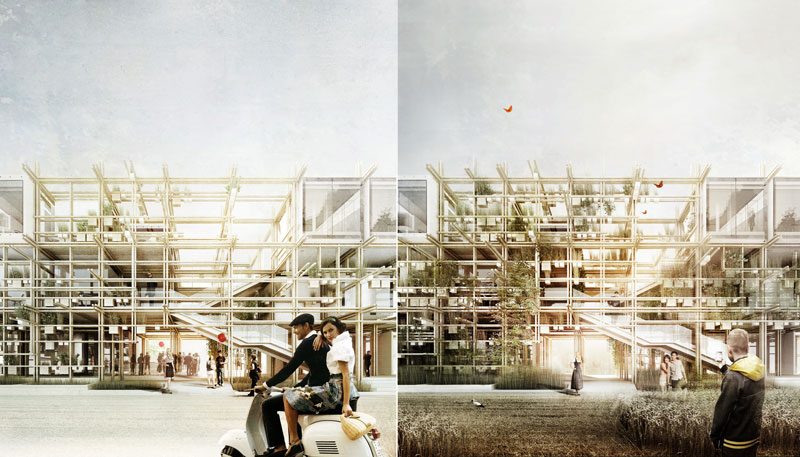
Image © Penda
The winning design gives Austria the chance to showcase the importance of organic and locally produced food in Austria. Given the small size of the country, locally produced food finds its way faster to its customers. “No other country has more organic food from local farmers in shops” say the designers.

Image © Penda
As a design principle the structure is just a frame for ‘home-grown’ food and the visitors are the main designers decorating the pavilion with plants of their chosing.
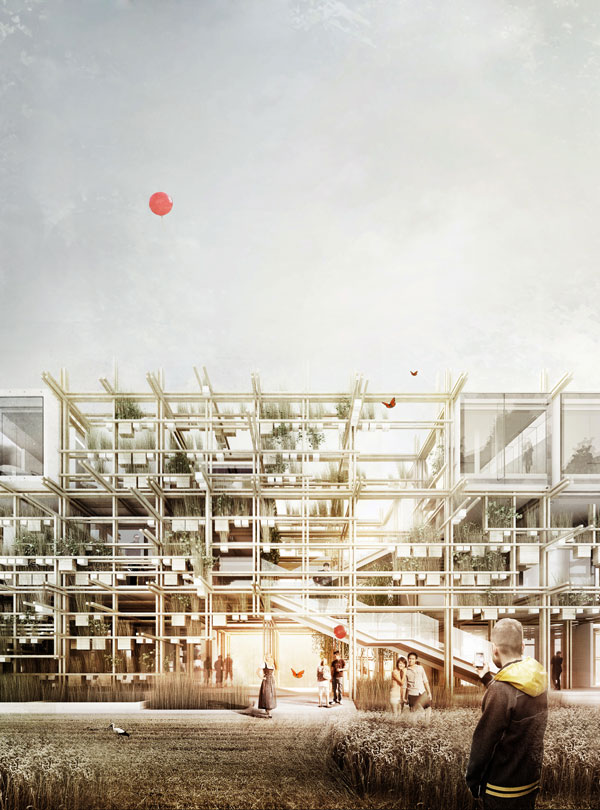
Image © Penda
The Austrian Pavilion will be in constant change over the 7 months of Expo. The initial “naked” 3.6m structural grid will completely be taken over by nature. During the summer months, the visitors are encouraged to fill the timber structure with seeds of vegetables, fruits or herbs. Visitors receive a pot at the entrance of the Pavilion to plant along the 820 m² ramp that is partly inside, and partly outside, always surrounded by the main structure.
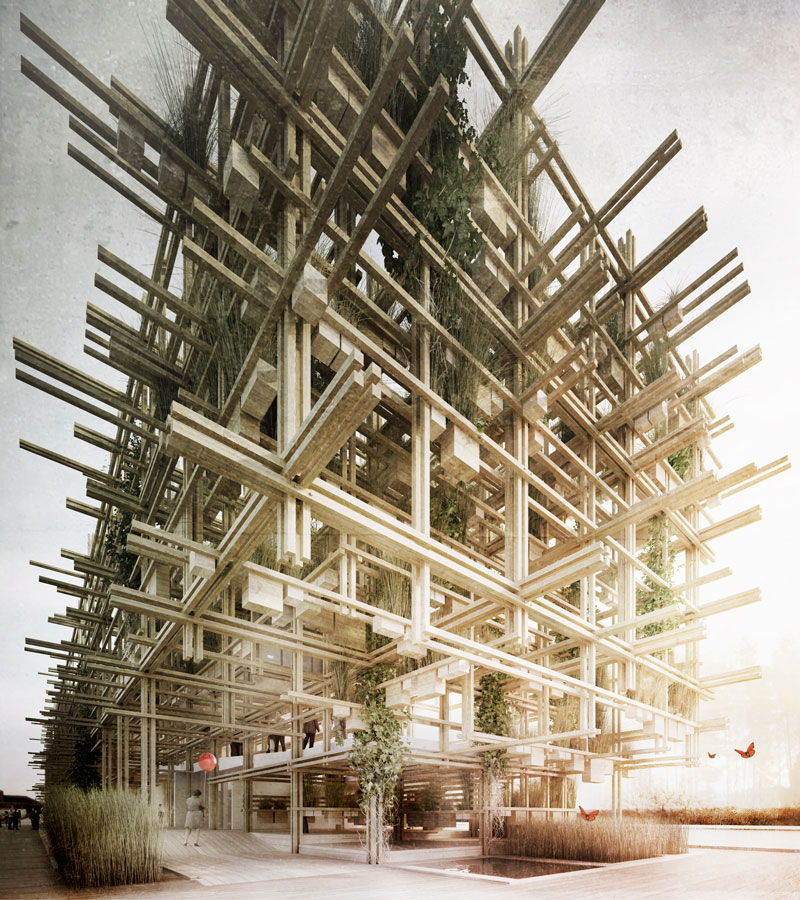
Image © Penda
The visitors get a closer insight of how our food get seeded and treated while it grows, how it gets picked and harvested and the incrediences get combined for traditional Austrian cuisine, wine or schnaps. That it does matters what we eat should be the main message of the exhibition to bring to the visitors mind.

Image © Penda
As they explore the exhibition ramp, visitors are introduced to local plants and seeds, giving them an understanding of the lifecycle of plants, and the passion that goes into the process. The ramp leads to a restaurant, where all vegetables, fruits and herbs planted by the visitors will be transformed into traditional Austrian dishes.

Image © Penda
Being a main part of this transformation and experiencing the visit in the pavilion with all senses, the visitor’s bond to the Pavilion will grow and Austria will be connected in people’s mind as a place for healthy food and a sustainable way of life.
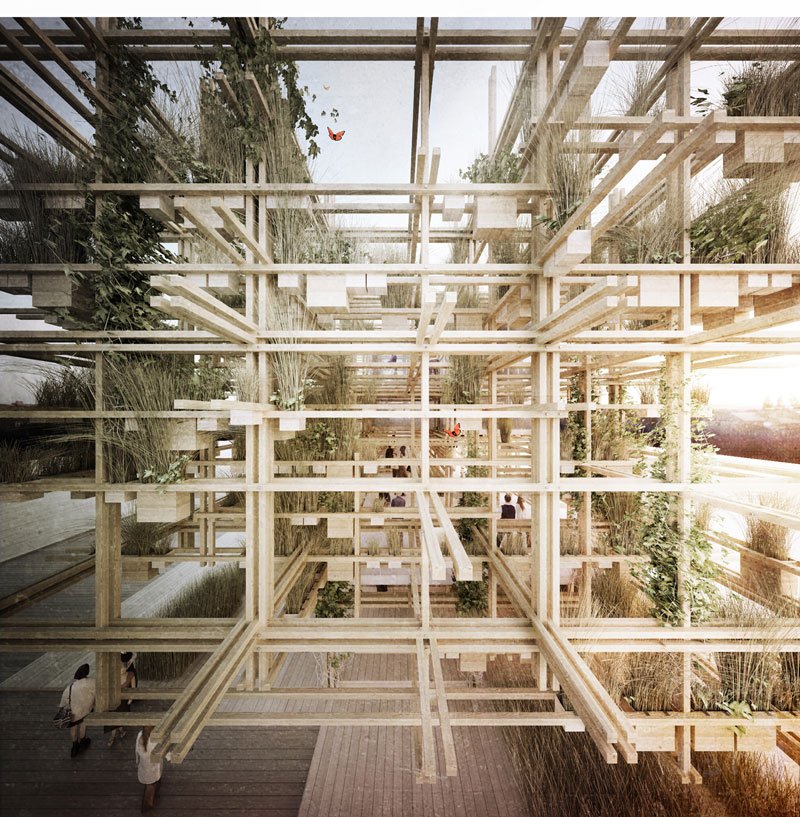
Image © Penda
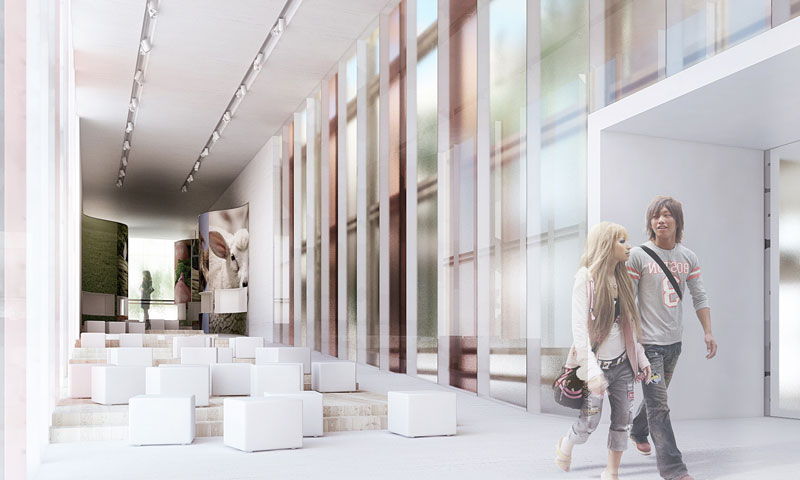
Image © Penda

*All images and information courtesy of Penda.














